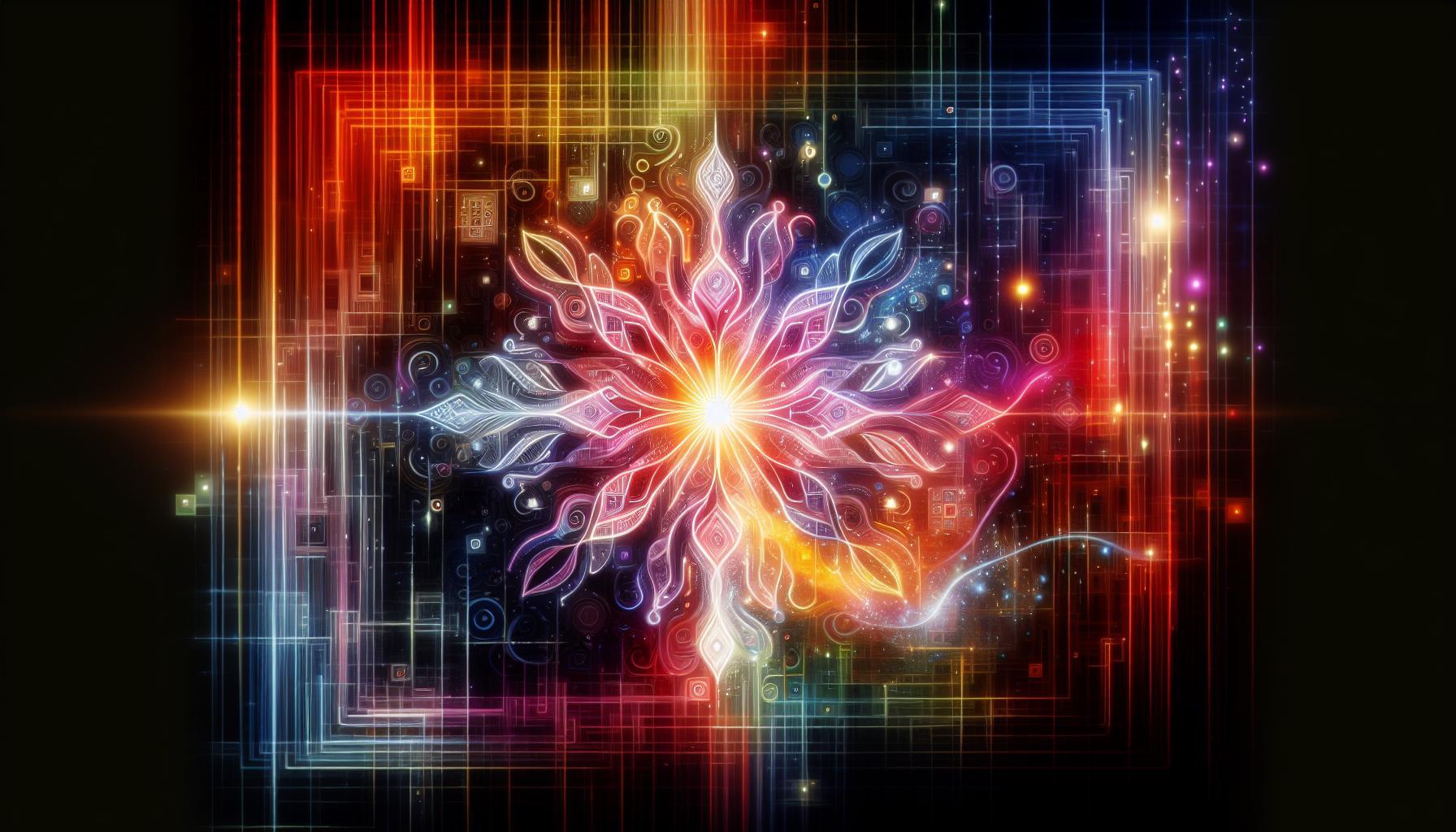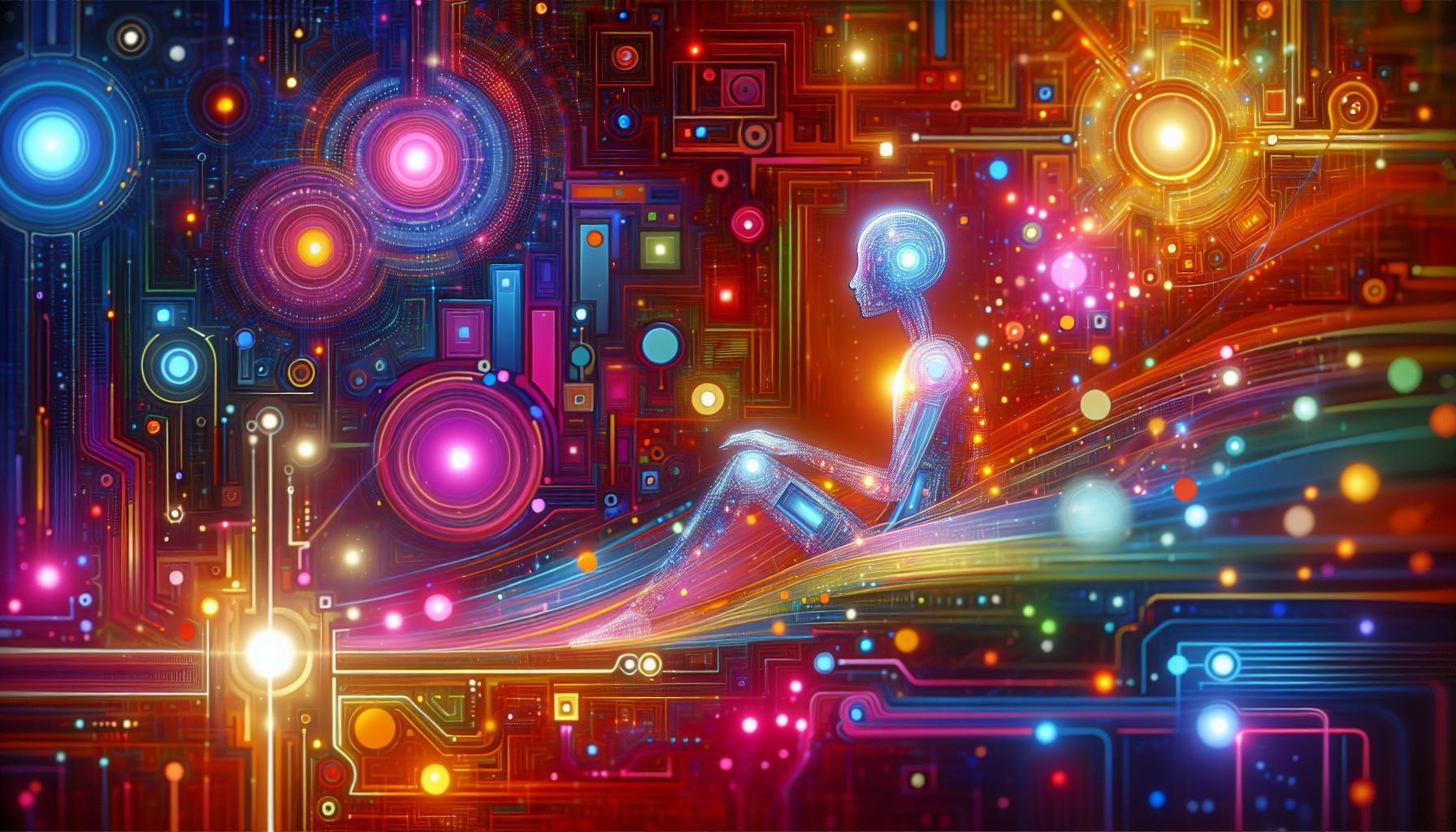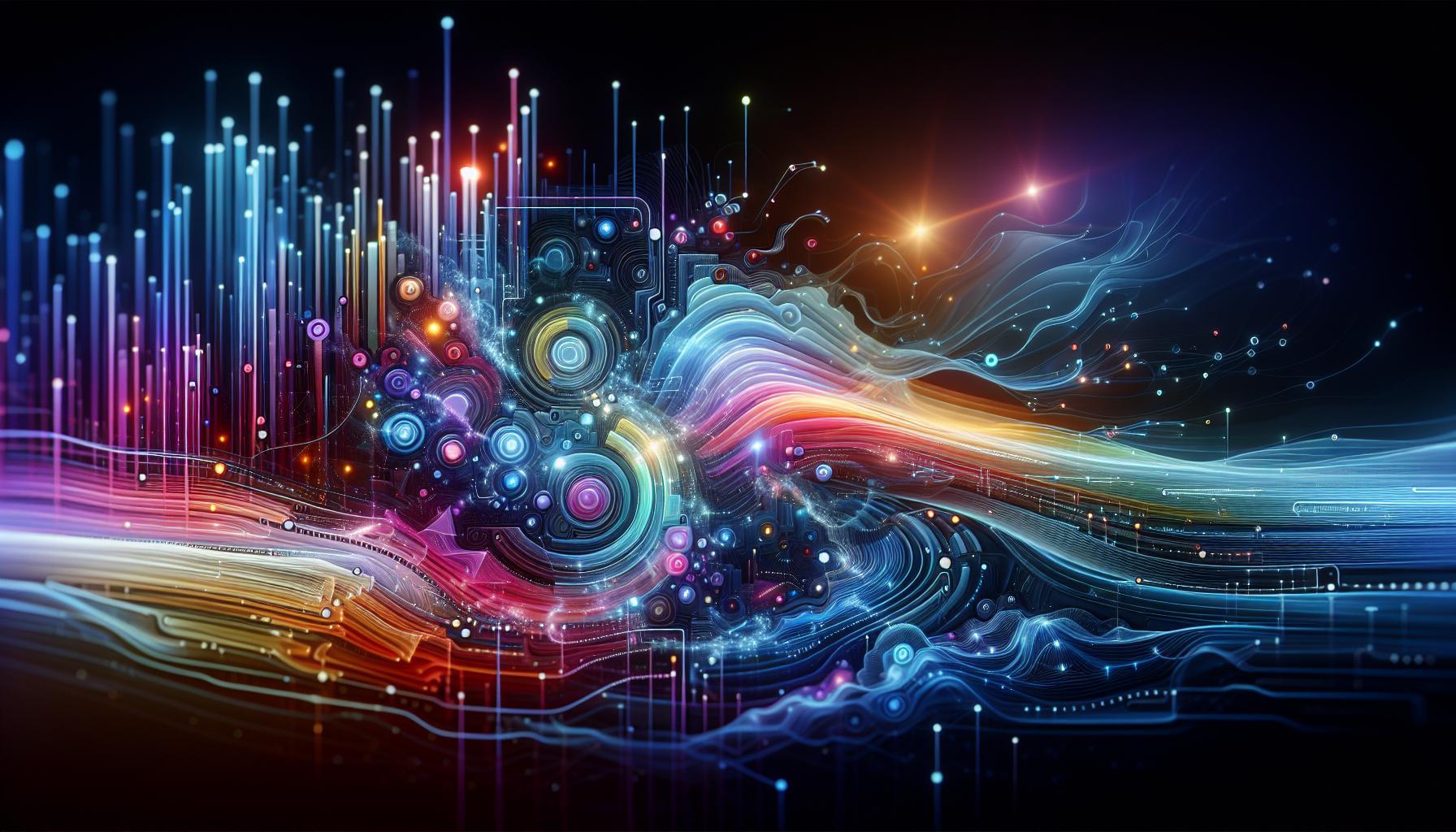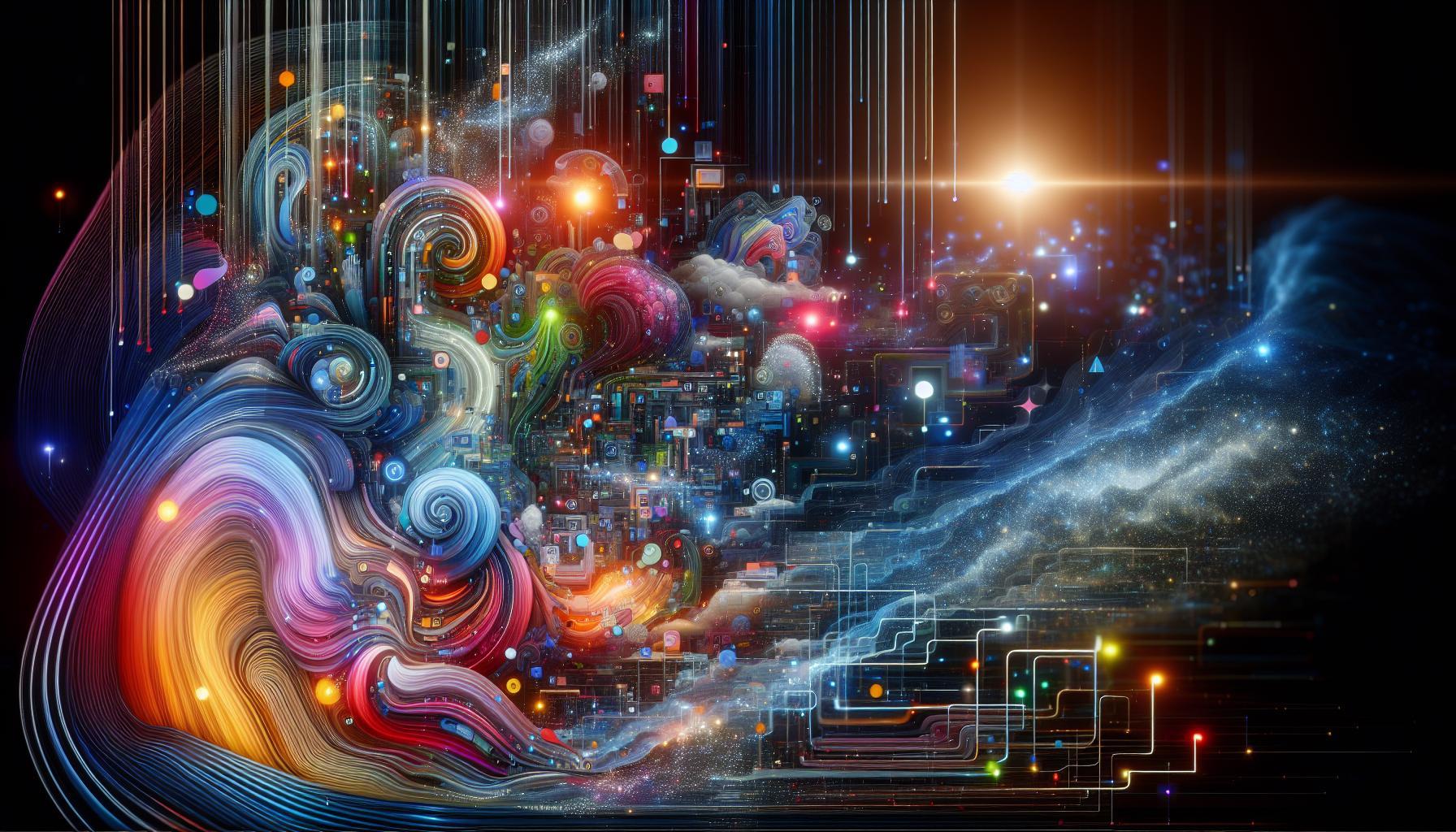Unlocking the true potential of your AI models hinges on optimal performance, and harnessing the power of NVIDIA GPUs can make all the difference. By integrating these advanced graphics processors with Stable Diffusion, users can significantly speed up processing times and enhance output quality. This guide will walk you through simple steps to achieve impressive results effortlessly.
Understanding Stable Diffusion and Its Dependence on GPU Performance
Utilizing advanced AI models like Stable Diffusion can be a game changer for artists and creators, but performance hinges significantly on the hardware you use, particularly your GPU. The architecture of recent NVIDIA GPUs, designed specifically for deep learning and graphics processing, allows for remarkably faster image generation and superior quality. This dependence on GPU performance can mean the difference between a fluid creative process and frustrating delays. When seeking to enhance your workflows, understanding how to leverage your GPU effectively is crucial.
Why GPU Matters in Stable Diffusion
At its core, Stable Diffusion uses a diffusion model that relies on sophisticated computations, which are best executed on powerful GPUs. Unlike CPUs, which handle multiple tasks at once but may lack the speed for intensive computations, GPUs are adept at executing the parallel processes required for image creation. Consequently, tasks such as rendering high-resolution imagery or processing complex prompts can be significantly accelerated. To maximize your results, consider the following benefits of using an NVIDIA GPU:
- Increased Rendering Speed: NVIDIA GPUs can reduce the time it takes to generate images from minutes to mere seconds.
- High-Quality Outputs: With better rendering capabilities, you can achieve finer details and more vibrant colors.
- Enhanced Features: Many NVIDIA GPUs support advanced features such as DLSS (Deep Learning Super Sampling), which further improves performance without sacrificing quality.
Optimizing Stable Diffusion for NVIDIA GPUs
To truly tap into the power of your NVIDIA GPU, specific optimizations are necessary. Here are actionable steps to ensure you’re getting the best performance from Stable Diffusion:
- Install the Latest Drivers: Ensure that you have the most current drivers from NVIDIA. This can often resolve performance bottlenecks.
- Utilize CUDA: Make sure that CUDA is properly configured in your Stable Diffusion setup. CUDA allows for significantly faster processing times by leveraging the parallel computing capabilities of NVIDIA GPUs.
- Adjust Settings: Experiment with settings like resolution and batch size to find the sweet spot that balances quality and speed according to your hardware capabilities.
By executing these steps, users can see instant boosts in performance and create stunning imagery with Stable Diffusion and their NVIDIA GPUs. As advancements in AI and GPU technology continue to evolve, so too does the potential for creativity and efficiency, empowering artists like never before.
Preparing Your System: Essential Requirements for NVIDIA GPU Utilization
To fully harness the capabilities of NVIDIA GPUs for high-performance tasks such as running Stable Diffusion, ensuring your system meets essential requirements is crucial. This preparatory stage is more than just installing software; it entails making sure your hardware, operating system, and drivers are optimized for GPU utilization. Failure to comply with these prerequisites can lead to underwhelming performance and an inability to maximize the potential of NVIDIA’s powerful graphics capabilities.
System Specifications
Before diving into the software side of things, it’s critical to confirm that your hardware configurations align with NVIDIA’s recommendations for GPU utilization. Review the following essential components:
- Graphics Card: Ensure your system is equipped with a compatible NVIDIA GPU. Ideal options may include the GeForce RTX series or the professional-grade Quadro series.
- Operating System: Use Windows 10 or later versions, or a compatible distribution of Linux such as Ubuntu, which are designed to better support machine learning frameworks.
- Memory (RAM): A minimum of 16 GB of RAM is advisable, but 32 GB or more can significantly enhance performance.
- Storage: Have an SSD for faster data retrieval times, as this will improve loading speeds and overall responsiveness.
Driver and Software Installation
Next, ensure that your system is equipped with the latest NVIDIA drivers-outdated drivers can lead to severe performance bottlenecks. To do this, visit the official NVIDIA website, download, and install the driver that matches your GPU model:
| Driver Type | Purpose |
|---|---|
| Game Ready Driver | Optimized for gaming, featuring the latest enhancements. |
| Studio Driver | Specialized for creative applications, ensuring stable performance. |
Alongside driver installation, install the necessary frameworks such as CUDA, cuDNN, and any machine learning libraries pertinent to Stable Diffusion. Adhering to specific version requirements for these tools can dramatically influence execution efficiency.
Configuration for Optimal Performance
Once your system is properly set up with the latest drivers and software, it’s vital to configure the settings for optimal performance. This includes:
- Adjusting settings in your machine learning framework to utilize the GPU effectively. Ensure that CUDA is enabled in your configurations.
- Checking that the GPU is correctly recognized by your system through command-line tools or settings menus.
- Testing the setup with sample models to guarantee everything is functioning smoothly and efficiently.
By taking these essential steps to prepare your system, you will set the stage for an impressive boost in performance while using NVIDIA GPUs for Stable Diffusion. Following this guidance not only maximizes efficiency but also elevates your overall user experience in high-performance computing tasks.
Step-by-Step Guide to Installing CUDA and cuDNN for Optimal Performance
To harness the full potential of your NVIDIA GPU with Stable Diffusion, a solid understanding of CUDA and cuDNN installation is essential. These powerful tools enable accelerated computation, dramatically enhancing the performance of deep learning models. Ensuring you have the right versions of CUDA and cuDNN installed is the first step toward significantly improving your workflow.
Prerequisites
Before diving into the installation, verify your system’s compatibility. Check that your NVIDIA drivers are up to date, as they form the backbone of CUDA’s functionality. Additionally, make sure to determine which versions of CUDA and cuDNN are compatible with your Stable Diffusion setup; this information can typically be found in the Stable Diffusion documentation or forums.
Installation Steps
- Download CUDA: Visit the official NVIDIA website to download the latest CUDA Toolkit. Select your operating system and follow the installation instructions provided on the website.
- Install CUDA: Execute the installer and select the components you want to install. Ensure that the installation path does not contain spaces, as this can cause issues later.
- Setup Environment Variables: After installation, add CUDA to your system’s PATH environment variable. This can typically be done by navigating to system settings and finding environment variables.
- Download cuDNN: Access the NVIDIA Developer website to obtain cuDNN. You may need to create a free account to download this library.
- Install cuDNN: Copy the cuDNN files into the corresponding CUDA directories on your system. This step is crucial as it connects cuDNN to your CUDA installation.
Verifying the Installation
Once both CUDA and cuDNN are installed, it’s essential to confirm that they are correctly set up. Open a command terminal and run the following commands:
nvcc --version
This command will display the installed version of CUDA, confirming that the installation was successful.
To check cuDNN, navigate to the directory where you installed cuDNN and run:
cat include/cudnn_version.h
This will show the cuDNN version and verify that it’s linked correctly.
By following these steps, you’ll effectively prepare your system to maximize the capabilities of your NVIDIA GPU. With CUDA and cuDNN properly installed, you are now equipped to run Stable Diffusion more efficiently, enabling quicker model training and faster inference. Enjoy the performance boost that comes from leveraging state-of-the-art GPU acceleration!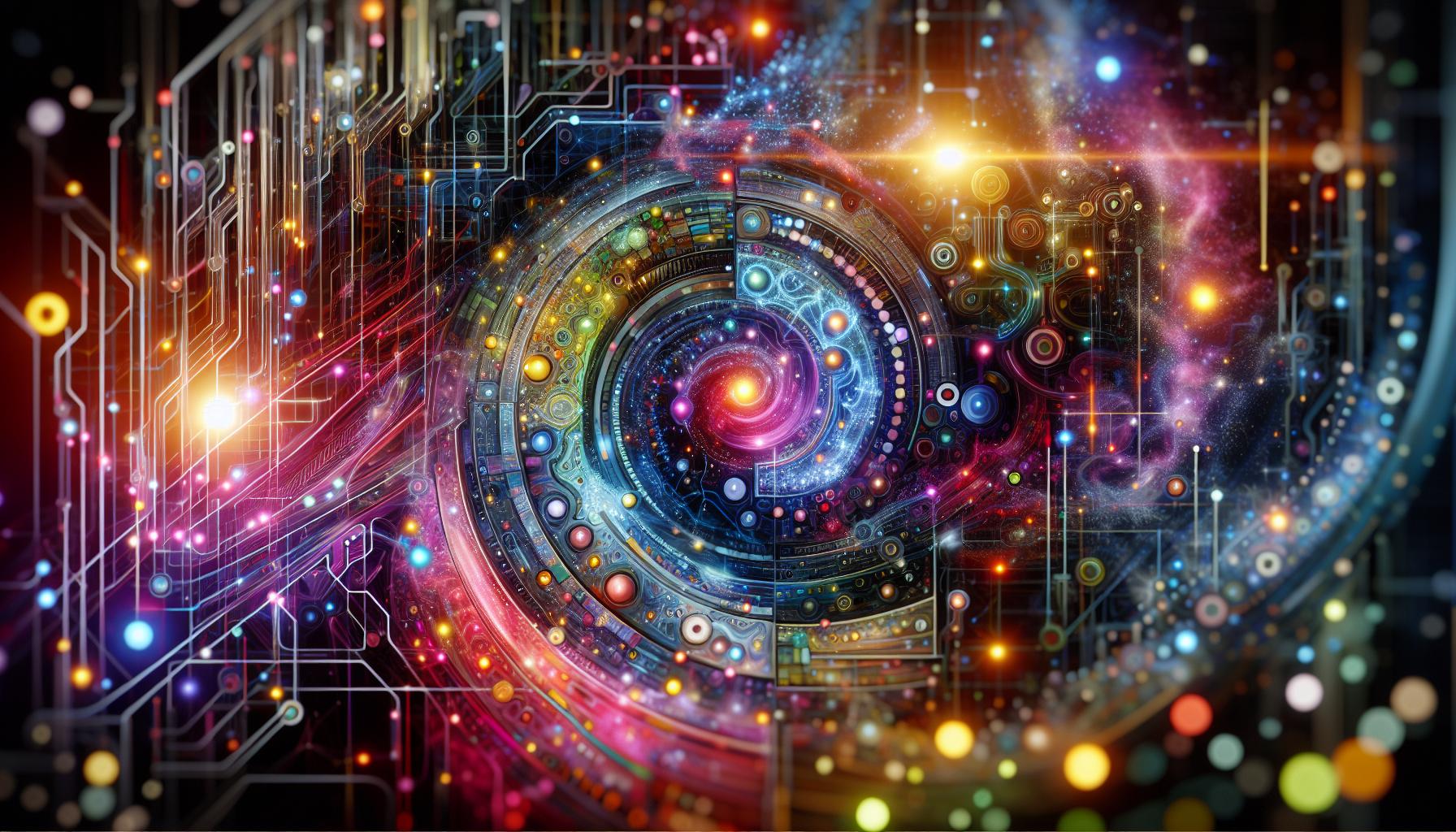
Configuring Stable Diffusion Settings for Maximum GPU Efficiency
Optimizing GPU settings for Stable Diffusion can significantly enhance your performance, allowing you to unleash the full potential of your NVIDIA graphics card. By carefully configuring settings such as batch size, precision, and other parameters, you can achieve faster rendering times and enhance overall efficiency. The right configurations can help reduce workload on the GPU while maximizing its capabilities, making your workflows smoother and more productive.
Understanding Key Settings for Your GPU
When you decide on the optimal settings for Stable Diffusion, there are several critical factors to take into consideration:
- Batch Size: This parameter determines how many images are processed simultaneously. A larger batch size can speed up processing but may be limited by your GPU’s memory. Experiment to find your GPU’s sweet spot where performance peaks without running out of memory.
- Mixed Precision: Utilizing mixed precision (FP16 instead of FP32) can drastically improve the processing speed and reduce memory usage. This can be activated in Stable Diffusion and is particularly effective on NVIDIA cards that support Tensor Cores.
- Resolution Adjustments: Since higher resolutions demand more from the GPU, consider your needs before setting image sizes. Sometimes, lowering the resolution slightly can lead to significant performance gains without a notable drop in quality.
- Sampler Choice: Different sampling methods may consume various amounts of GPU resources. Exploring options like DDIM or PLMS can help you find a balance between quality and speed.
Practical Steps to Configure Settings
Let’s dive into actionable steps that will help you configure these settings effectively:
| Setting | Recommended Configuration | Notes |
|---|---|---|
| Batch Size | 16 – 32 (depending on GPU memory) | Test with lower settings if encountering memory errors. |
| Mixed Precision | Enable FP16 | Use with compatible NVIDIA GPUs. |
| Resolution | 512 x 512 or lower | Adjust based on the quality requirements of your output. |
| Sampler | DDIM preferred for speed | Try alternatives to see performance variations. |
By applying these tweaks, you can significantly improve the efficacy of your NVIDIA GPU with Stable Diffusion. Each setting plays a crucial role in either enhancing or hindering your rendering speeds, so take the time to experiment with these configurations. Effective optimization not only boosts performance instantly but also enriches your creative process, allowing you to focus on producing exceptional visuals.
Real-World Examples: Harnessing NVIDIA GPUs for Stunning AI Image Generation
Harnessing the power of NVIDIA GPUs has transformed the landscape of AI image generation, allowing creators to produce stunning visuals at unprecedented speeds. With advancements in technology, such as the latest GeForce RTX 50 Series, these GPUs are not only enhancing gaming experiences but also revolutionizing the capabilities of deep learning frameworks like Stable Diffusion. This progress opens up a world of creative possibilities, enabling artists, designers, and developers to explore intricate details and vibrant colors with ease.
One notable example of leveraging NVIDIA GPUs for AI image generation is the rapid generation of high-resolution images. With models like Stable Diffusion optimized to utilize the parallel processing capabilities of NVIDIA’s RTX GPUs, users can expect significantly faster rendering times. This efficiency not only accelerates the creative workflow but also facilitates real-time adjustments, allowing for immediate iterations based on feedback. Creators can experiment with various parameters in the model, producing outputs that range from hyper-realistic landscapes to imaginative artwork in moments instead of hours.
Practical Applications and Case Studies
Industries ranging from entertainment to advertising have begun to harness the power of NVIDIA GPUs for their AI projects. For instance:
- Film Production: By utilizing NVIDIA’s architecture, studios can generate concept art and visual effects more efficiently, enabling teams to visualize ideas faster and thus streamline the production process.
- Advertising: Marketers are using AI-generated imagery to create stunning visuals that resonate with consumers, achieving quicker turnaround times for campaigns.
- Game Development: Game studios are integrating AI models to design intricate environments and characters, significantly enhancing the depth of gameplay experiences.
Additionally, developers implementing Stable Diffusion can leverage the tensor cores found in NVIDIA GPUs, which provide performance enhancements for complex calculations involved in the image synthesis process. For users looking to maximize their GPU’s potential, properly configuring settings within the Stable Diffusion model to utilize these cores ensures that they can generate images with optimal quality and speed.
| Feature | NVIDIA GPU Advantage |
|---|---|
| Real-Time Image Rendering | Enhanced processing capabilities lead to minute-long generation times for complex images. |
| High-Resolution Output | Support for generating images up to 4K and beyond without sacrificing detail. |
| Parallel Processing | Ability to run multiple inference tasks simultaneously, drastically reducing wait times. |
In summary, understanding how to make Stable Diffusion use NVIDIA GPU technology not only advances personal projects but also sets a new standard in the visual arts. By embracing this powerful combination, creators can push the boundaries of what is possible in AI image generation, transforming imaginative concepts into reality at a breathtaking pace.
Troubleshooting Common Issues When Using NVIDIA GPUs with Stable Diffusion
To harness the full potential of NVIDIA GPUs with Stable Diffusion, users may encounter some common issues that can impair performance or usability. Understanding these challenges is crucial for a smooth experience, especially for those looking to explore AI-generated graphics and images. Here we delve into troubleshooting steps that can help optimize performance and resolve typical complications when using NVIDIA hardware alongside Stable Diffusion.
Driver and Software Compatibility
One of the first steps in troubleshooting involves ensuring that your GPU drivers are up-to-date. NVIDIA regularly releases updates that not only enhance performance but also patch known bugs that can affect AI applications like Stable Diffusion. To check for the latest driver updates, follow these steps:
- Visit the NVIDIA GeForce website.
- Navigate to the ‘Drivers’ section.
- Download and install any recommended updates.
- Restart your system to apply changes.
In addition to driver updates, verify that your version of Stable Diffusion is compatible with your current setup. Incompatibilities can lead to suboptimal performance or error messages during operation.
CUDA and cuDNN Configuration
Another important element is the proper setup of CUDA and cuDNN, which are essential for leveraging the computational power of NVIDIA GPUs. If you experience crashes or poor performance, check that these libraries are properly installed and configured:
- Ensure that the CUDA version aligns with Stable Diffusion’s requirements. You can find this information in the installation documentation.
- Install the correct version of cuDNN that corresponds with your CUDA installation to avoid conflicts.
- Set the environment variables appropriately. This includes paths to both CUDA and cuDNN in your system settings.
Memory Management and Performance Settings
Effective memory management can significantly influence the performance of Stable Diffusion when using NVIDIA GPUs. If you’re noticing slow processing speeds or crashes due to out-of-memory errors, consider these suggestions:
- Reduce the batch size in the Stable Diffusion settings to lower memory consumption.
- Utilize mixed-precision settings when available, which can enhance performance by using less memory for calculations.
- Monitor GPU memory usage with tools like GPU-Z or NVIDIA’s built-in performance monitoring tools.
| Issue | Solution |
|---|---|
| Driver Issues | Update GPU drivers regularly from NVIDIA’s website. |
| Cuda/cuDNN Errors | Ensure correct versions are installed and configured. |
| Memory Errors | Reduce batch sizes and optimize memory allocation settings. |
Addressing these common issues can significantly improve your experience with Stable Diffusion and NVIDIA GPUs. If problems persist, consider reaching out to community forums or NVIDIA support for more tailored assistance. By following these troubleshooting steps, you’ll be well on your way to maximizing the capabilities of your hardware for stunning AI-generated graphics.
Enhancing Your Workflow: Tips for Leveraging Advanced GPU Features in AI Art
When diving into the world of AI art, making the most of your hardware is essential for unlocking creative potential. One of the most powerful allies in this pursuit is the NVIDIA GPU, which, when utilized effectively, can significantly enhance your workflow with Stable Diffusion. Understanding how to harness advanced GPU features can transform your creative process, allowing for faster rendering times, improved quality of output, and a more efficient handling of large datasets.
Optimizing GPU Settings for Maximum Performance
To get the most out of your NVIDIA GPU, begin by tweaking the settings within the software you’re using. Here are some actionable tips:
- Update Drivers: Always keep your GPU drivers updated to take advantage of the latest performance enhancements and compatibility fixes.
- Adjust Performance Modes: Set your GPU to a performance mode rather than power-saving mode. This can usually be done through the NVIDIA Control Panel.
- Leverage Tensor Cores: If your GPU supports Tensor Cores, ensure that your AI framework takes advantage of them for accelerated performance, particularly when working with deep learning models.
Batch Processing for Efficiency
Taking advantage of batch processing can greatly reduce the time needed to generate multiple artwork pieces. By grouping tasks into batches, GPUs can effectively optimize the rendering pipeline and utilize their resources more efficiently.
| Batch Size | Expected Time Reduction | Recommendation |
|---|---|---|
| 1-5 | Minimal | Good for simple images |
| 6-10 | 20-30% | Ideal for moderate complexity |
| 11-20 | Up to 50% | Best for complex designs |
Experimenting with Mixed Precision
Another advanced feature to consider is mixed precision training. By combining 16-bit floating-point calculations with standard 32-bit operations, you can significantly decrease memory usage while maintaining the integrity of your models. This allows for quicker iterations and processing without compromising output quality. Make sure that your framework supports mixed precision, as this can lead to more efficient usage of your GPU’s memory bandwidth and resources.
Overall, these techniques not only enhance your workflow but also empower you to explore more creative avenues with your AI art projects. Understanding how to make Stable Diffusion use your NVIDIA GPU efficiently can be a game changer in your artistic journey.
Exploring Alternatives: Other Tools and Techniques to Boost Image Generation Speed
In the ever-evolving landscape of AI image generation, exploring alternative tools and techniques can significantly enhance your workflows and speed up performance, especially when you’re aiming to maximize the capabilities of platforms like Stable Diffusion using NVIDIA GPUs. Whether you’re a professional artist or a hobbyist, sharpening your toolkit can lead to faster production times and richer creative outputs.
One popular method to accelerate image generation is leveraging dedicated AI image generators that harness powerful algorithms. For instance, tools such as Microsoft’s AI Image Generator allow users to create visually stunning images quickly, transforming text prompts into high-quality images in mere seconds. Its integration with Microsoft Designer offers an intuitive interface that can inspire creativity while maintaining efficiency [[1]]. Similarly, Canva combines simplicity with power by employing a suite of AI tools, including features powered by DALL·E and Google’s Imagen, to generate personalized artwork from text descriptions [[3]].
Additionally, engaging with advanced models like OpenAI’s GPT-4o image generation can yield impressive results. This model excels at accurately interpreting and rendering prompts while also using contextual information from uploaded images. The ability to input existing visuals as references means artists can rapidly iterate and manipulate their ideas without starting from scratch [[2]].
To further enhance your tools, consider optimizing your own computational setup. Configuring NVIDIA GPUs for performance can drastically reduce render times. Ensure that your drivers are up-to-date and explore using CUDA or cuDNN for frameworks that benefit from these technologies. Adjusting settings for batch sizes or resolution can also help balance speed and image quality, enabling more swift iterations and results. By combining these techniques with established AI platforms, you create a powerful pipeline for image generation that maximizes both creativity and efficiency.
Faq
How to Make Stable Diffusion Use NVIDIA GPU? Boost Performance Instantly?
To make Stable Diffusion utilize your NVIDIA GPU for enhanced performance, you need to ensure proper software installation and configuration. Start by installing the latest NVIDIA drivers, then configure Stable Diffusion settings to enable GPU acceleration.
Making the most out of your NVIDIA GPU can vastly improve the speed and quality of image generation in Stable Diffusion. Ensure that your system has the latest version of CUDA and cuDNN compatible with your GPU. After setting this up, you can adjust the Stable Diffusion configuration files to prioritize GPU usage. For detailed instructions, check our guide on configuring Stable Diffusion.
What is Stable Diffusion and how does it work with NVIDIA GPU?
Stable Diffusion is a powerful AI model for generating images from text prompts, and it works optimally with NVIDIA GPUs due to their parallel processing capabilities. The use of a GPU allows for faster computation, enhancing image generation efficiency.
Essentially, Stable Diffusion breaks down the image creation process into manageable tasks, which a GPU can handle simultaneously. This results in significantly reduced rendering times compared to using a CPU. By leveraging the power of your GPU, you can generate high-resolution images quickly while enjoying smoother workflows in your creative projects.
Why does Stable Diffusion perform better on NVIDIA GPUs?
Stable Diffusion benefits from NVIDIA GPUs because they are specifically designed for AI and deep learning tasks. The architecture of NVIDIA GPUs is optimized for processing large datasets and complex computations required by machine learning models.
With features like Tensor Cores, NVIDIA GPUs excel in handling the matrix calculations central to the operations of Stable Diffusion. This makes them up to several times faster in generating images than conventional CPUs. For many users, switching to an NVIDIA GPU translates not only to speed but also to improved quality in generated images, thanks to enhanced graphical fidelity.
Can I use Stable Diffusion without an NVIDIA GPU?
Yes, you can use Stable Diffusion without an NVIDIA GPU, but performance will be significantly affected. Running the model on a CPU can lead to much slower processing times and a less efficient workflow.
For users without access to an NVIDIA GPU, exploring cloud-based solutions or remote servers that provide GPU access can allow for better performance without the need for physical hardware. Services like Google Colab offer free and paid tiers to help users leverage GPU capabilities for AI tasks, including Stable Diffusion.
How do I check if my NVIDIA GPU is compatible with Stable Diffusion?
To check if your NVIDIA GPU is compatible with Stable Diffusion, visit the official NVIDIA website for details on supported architectures. Typically, GPUs from the GTX 10 series and RTX series should work effectively.
Additionally, ensure you have the right version of the CUDA toolkit installed, as this is crucial for running AI models smoothly. You can also utilize tools like GPU-Z to view your GPU specifications and confirm compatibility with the necessary software requirements for Stable Diffusion. If in doubt, refer to the official system requirements for Stable Diffusion.
What software do I need to run Stable Diffusion on an NVIDIA GPU?
To run Stable Diffusion on an NVIDIA GPU, you will need the appropriate NVIDIA drivers, CUDA, and a deep learning framework like PyTorch. These components enable GPU acceleration to function effectively while using Stable Diffusion.
The installation process for these software packages involves downloading them from their respective official websites and following their setup instructions. Once installed, ensure that you configure Stable Diffusion to link with these frameworks for optimal performance. Check resources like our installation guide for step-by-step assistance.
Is there a performance difference between mid-range and high-end NVIDIA GPUs when using Stable Diffusion?
Yes, there is a notable performance difference when using mid-range versus high-end NVIDIA GPUs with Stable Diffusion. High-end models generally offer better processing power, resulting in faster image generation times and the ability to handle higher resolutions.
Mid-range GPUs may still deliver acceptable performance, but complex designs or high-resolution outputs could slow down. Users seeking the best productivity and output quality might consider investing in higher-spec GPUs, especially for extensive and intensive projects. Ultimately, your needs and budget will dictate the best option for utilizing Stable Diffusion effectively.
The Way Forward
In conclusion, harnessing the power of your NVIDIA GPU for Stable Diffusion can significantly enhance your AI image generation experience. By following the steps outlined-installing the necessary drivers, configuring your environment, and optimizing settings-you can unlock impressive performance gains that elevate your creative projects. Remember, even small adjustments can lead to major improvements in speed and quality.
We encourage you to experiment with different configurations and explore the diverse possibilities that AI visual tools offer. Your journey into the world of AI-driven art can lead to innovative techniques and fascinating outcomes. Keep pushing the boundaries of your creativity, and never hesitate to seek further information and tips to refine your skills. The world of AI is vast and full of potential-dare to explore it!


